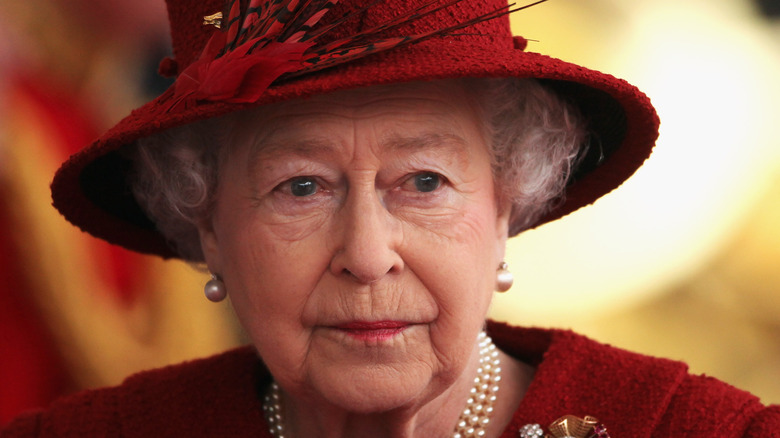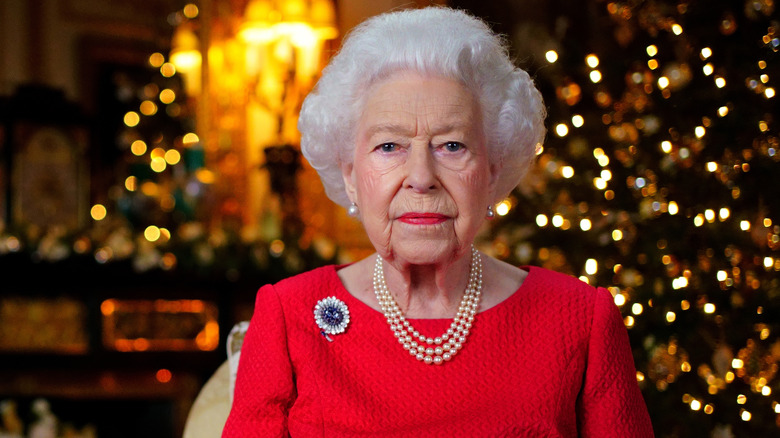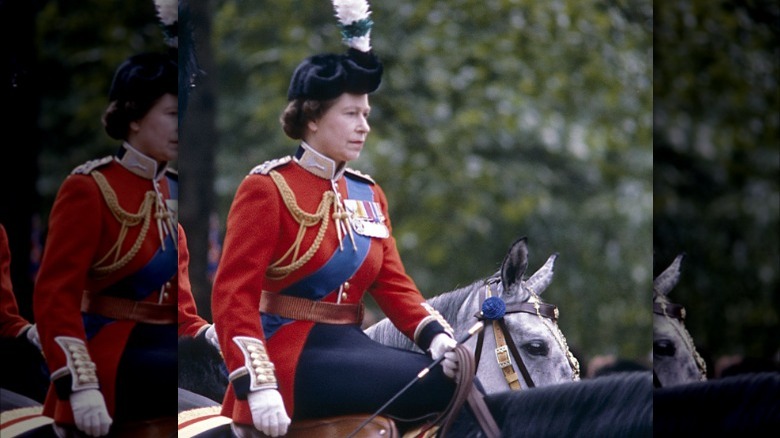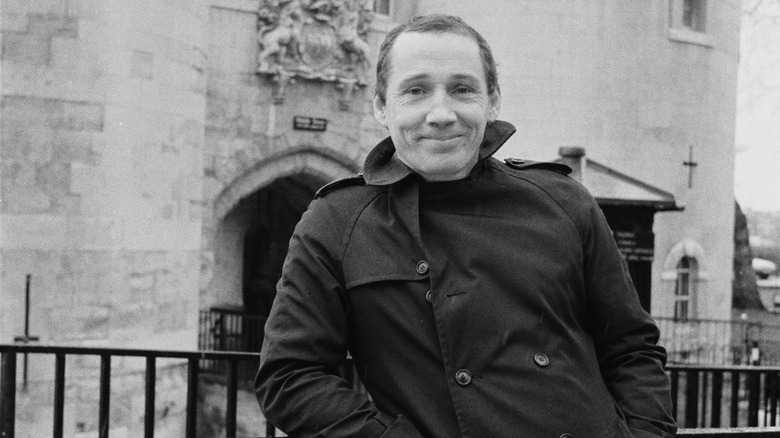Windsor Castle Intruder Is Finally Being Brought To Justice For Their Plot To Harm Queen Elizabeth
Sometimes being a high-profile public figure can be a dangerous job. There have been numerous times when members of the British royal family have been threatened, such as the attempted kidnapping of Princess Anne in 1974, per British Heritage. Throughout her 70-year reign, the late Queen Elizabeth II had a few close calls as well. During a 1981 visit to New Zealand, Christopher John Lewis fired a gun at the monarch as she exited her car. Fortunately, the shot went wide, leaving the queen unharmed. As reported by The Times, the incident was not publicly disclosed when it happened, and it was only mentioned in classified documents.
Queen Elizabeth wasn't the first monarch to face danger in the line of duty. In 1842, her great-great-grandmother, Queen Victoria, was threatened with a gun when she was out in her carriage. Soon after, a second gunman fired a weapon loaded with paper and tobacco, per the Daily Mail. In response to these incidents, U.K. Parliament passed the 1842 Treason Act, a law intended to punish offenders for less serious crimes involving the crown.
Recently, this law was invoked in a case involving a Christmas 2021 plot to harm the late queen.
Jaswant Singh Chail pleaded guilty to a treasonous act from Christmas 2021
As reported by The Telegraph, on February 3, Jaswant Singh Chail pleaded guilty under the 1842 Treason Act. Chail was arrested after he broke into Windsor Castle on Christmas morning 2021. He had climbed into the property via rope ladder and was discovered by royal protection officers near Queen Elizabeth's apartment. When the protection officers questioned Chail, who was carrying a loaded crossbow, he told them, "I am here to kill the Queen," per ITV. He also outlined his assassination plot in a previously recorded home video that he sent to friends and family prior to his arrest.
In the video, he attributed his actions to "revenge for those who have died in the 1919 Jallianwala Bagh massacre. It is also revenge for those who have been killed, humiliated and discriminated on because of their race," per BBC. According to The New York Times, approximately 1,000 people in India were killed when British soldiers fired on unarmed protestors during the 1919 massacre.
Until the 1998 Crime and Disorder Act, a conviction of treason could result in the death penalty, per The Times. Since that time, treason has carried a maximum penalty of life in prison. Currently, Chail is receiving mental health services at Broadmoor Hospital. He will be sentenced on March 31 after the court determines whether prison or continued hospitalization is the appropriate course of action, per the Daily Mail.
Marcus Sarjeant was found guilty of treason in 1981
Jaswant Singh Chail is the second person since 1981 to have been found guilty of treason under the 1842 law. In 1981, during Trooping the Color, Marcus Sarjeant discharged six blank shots at Queen Elizabeth II, startling her horse, per The New York Times.
In response to the danger, the queen retained her composure, calmed her horse, and carried on with her parade duties, as noted in the Daily Mail. Sarjeant was sentenced to five years in prison for the crime, although he was released after just three years. Prior to the incident, he wrote a warning letter stating, "Your Majesty. Don't go to the Trooping the Colour ceremony because there is an assassin set up to kill you, waiting just outside the palace," although the note arrived three days too late. Sarjeant later sent an apology letter, but the queen declined to respond, per the Independent.
In contrast, John Heasman, who was the first person to subdue Sarjeant, was personally thanked by Queen Elizabeth and her family. After he had volunteered with the ambulance service at a royal garden party, Heasman was invited in for a private meeting. "I was shocked," Heasman recalled when speaking to the BBC. "The Queen said something like, 'Don't worry, it's just an informal meeting to say thank you. Just come and sit down. Thank you very much for what you did.'" He noted it was a memory he'd cherish for the rest of his life.
Although he broke into the queen's bedroom, Michael Fagan didn't commit treason
Unlike the incidents involving Jaswant Singh Chail and Marcus Sarjeant, Michael Fagan didn't get charged with treason after he had a close encounter with Queen Elizabeth II. In 1982, Fagan exposed some serious security flaws at Buckingham Palace. He entered the palace grounds, climbed onto a roof, and gained access through an unlocked window. After winding his way through the corridors, he ended up in her majesty's bedroom (via The New York Times).
After pulling back the room's curtains, Fagan was surprised to find himself face-to-face with the queen. "I didn't frighten her too much but I was quite shocked," Fagan told The Sun. After Queen Elizabeth was unable to contact security, Fagan recalled, "she said, 'Just one minute, I'll get someone', swept past me and ran out of the room, her little bare feet running across the floor."
Fagan was later escorted out of the room by "Tall Paul," the queen's trusted footman, who detained him with a drink until police arrived, per Town & Country. He wasn't charged since trespassing was a civil offense in the U.K., and the queen declined to press charges. However, this wasn't the first time Fagan had made an unauthorized visit to the palace. He did end up facing charges for stealing and drinking King Charles' wine.



